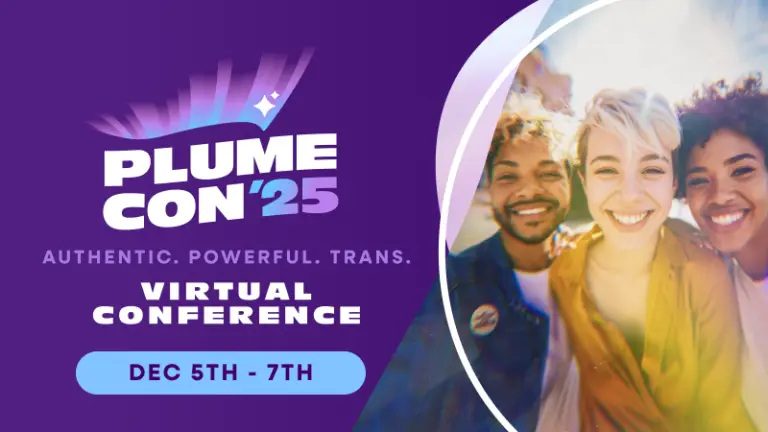If you love diving into books that challenge the way we think about identity, technology, and culture, then Trans Technologies by Oliver L. Haimson needs to be on your radar! As part of our Trans Bookworm Series, where we highlight thought-provoking reads for and about trans and nonbinary folks, this book unpacks the ways technology and transness are deeply, and sometimes unexpectedly, intertwined.
Table of Contents
What’s Trans Technologies All About?
At its core, this book isn’t just about the latest tech trends, medical advancements, or online spaces—it’s about how trans people are constantly innovating, adapting, and redefining technology. And not just in big, flashy ways, but in everyday, life-changing, and deeply personal ways that often go unnoticed. From hormone tracking apps to DIY body modification techniques, trans folks are out here making technology work for them, whether or not it was designed with them in mind.
But it’s not just about what’s working—it’s also about what’s broken. The book takes a hard look at the ways technology is used to police gender, surveil trans people and our bodies, and reinforce outdated ideas about identity. Ever had facial recognition software misgender you? Ever struggled with an app that just won’t let you put in your actual gender? This book dives into those frustrations and explains why they happen.
Technology Isn’t Neutral—And It’s Often Not Built for Trans People
One of the biggest takeaways from the book is this: all technology is designed with a specific kind of user in mind. And more often than not, that default user is cisgender. The result? A lot of tech just straight-up doesn’t work well for trans and nonbinary folks.
Think about health apps, for example. Many of them assume a strict gender binary when calculating things like caloric needs, hormone levels, or workout plans. If you’re on HRT or have a body that doesn’t fit neatly into those categories, that’s not just inconvenient—it’s actively unhelpful.
Or take automated identity verification systems, like the ones used for banking, security, and even online dating. They rely on government-issued IDs, which means that if your legal gender marker doesn’t match your presentation, you might get flagged or locked out entirely. These aren’t just annoying glitches; they’re systemic issues that make life harder for trans people.
This book makes the case that we need to stop treating trans people as “edge cases” in tech design. The world isn’t just made for cis folks, and technology shouldn’t be, either.
Trans People Are Tech Innovators—Whether the World Recognizes It or Not
Trans people aren’t just passive technology users—we’re hackers, creators, and innovators. The book shines a light on the ways trans folks are constantly modifying and reshaping tech to fit their own needs.
Think about DIY hormone tracking apps, homemade prosthetics, and voice training software. Many of these tools didn’t come from big tech companies—they came from trans communities sharing knowledge and finding creative solutions to problems that mainstream developers ignored.
Online spaces are another example of trans ingenuity. From Tumblr threads to Discord servers, trans folks have built entire ecosystems of support, education, and resource-sharing. Need tips on binding safely? There’s a guide for that. Want to train your voice? Someone has probably created a free app or Discord server channel for it.
By centering trans innovation, Trans Technologies reminds us that trans people aren’t just victims of bad tech—we’re also pioneers in making tech work better for ourselves and our community.
Digital Spaces: Both a Lifeline and a Battleground
The internet has been a double-edged sword for trans people. On the one hand, it’s been an incredible tool for self-discovery, community-building, and activism. On the other hand, it’s often a hostile place filled with algorithmic discrimination, harassment, and censorship.
Social media, for example, has allowed trans people to find each other, share resources, and advocate for their rights. But at the same time, platforms like TikTok, YouTube, and Instagram have been known to flag or demonetize trans-related content, even when it’s educational or empowering. Ever noticed how certain words get your posts shadowbanned? That’s algorithmic suppression at work.
And then there’s the ever-present issue of online harassment. From misgendering to doxxing, trans people are disproportionately targeted in digital spaces. But despite all of this, trans communities continue to carve out safe spaces and fight back. Trans Technologies captures this resilience and makes it clear: the internet might be a battleground, but it’s also a home for many of us.
Surveillance, Control, and the Fight for Autonomy
One of the most unsettling parts of the book is its deep dive into surveillance and government tracking. Facial recognition software, security screenings, and legal identification systems often fail trans people in very real and harmful ways.
For example, facial recognition software is notoriously bad at correctly identifying trans and nonbinary folks, leading to misgendering or even wrongful detainment. Ever been pulled aside for extra screening at the airport because your ID photo doesn’t “match” your face? That’s not just an inconvenience—it’s an issue of safety and dignity.
Then there’s the struggle to update legal documents. Many trans people face enormous bureaucratic obstacles when trying to change their gender markers on IDs, medical records, and other official paperwork. These mismatches can lead to being denied healthcare, turned away from services, or outed against their will. Trans Technologies argues that technology should be making these processes easier, not harder, but instead, it’s often used as a tool to control and police trans lives.
Imagining a More Inclusive Tech Future
Okay, it’s not all doom and gloom. One of the best things about Trans Technologies is that it doesn’t just highlight problems—it also imagines solutions. What would it look like if technology were built with trans people in mind from the very beginning?
Picture a world where:
- Health apps actually understand and accommodate gender diversity.
- Facial recognition technology works for everyone, not just cis people.
- Social media platforms prioritize trans safety and visibility.
- Legal identity systems are flexible and affirming, rather than restrictive and outdated.
The book calls on developers, designers, and everyday users to rethink how they approach tech. Trans people shouldn’t be an afterthought in these conversations—we should be at the forefront of them.
Trans Technologies is a wake-up call. It forces us to think about how technology shapes our lives, for better or worse. More importantly, it highlights the resilience, creativity, and ingenuity of trans people in the face of systemic exclusion. For trans readers, this book is a validation of experiences that often go unrecognized. For allies, it’s an eye-opener to the ways tech can reinforce bias—and how we can push for change.
If you’re looking for a book that’s equal parts informative, thought-provoking, and empowering, Trans Technologies is a must-read. It doesn’t just ask tough questions—it provides a roadmap for a future where technology works for everyone.



